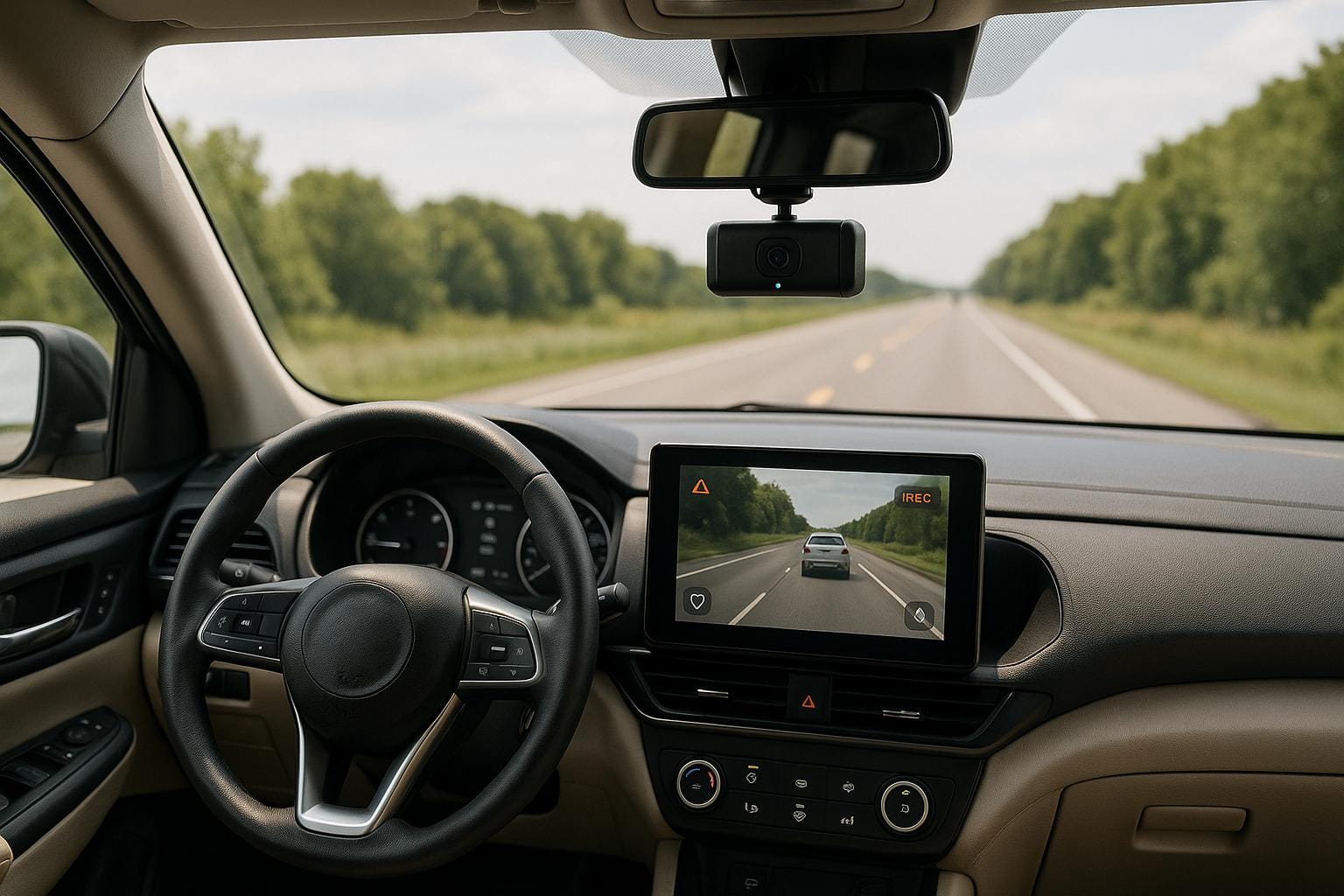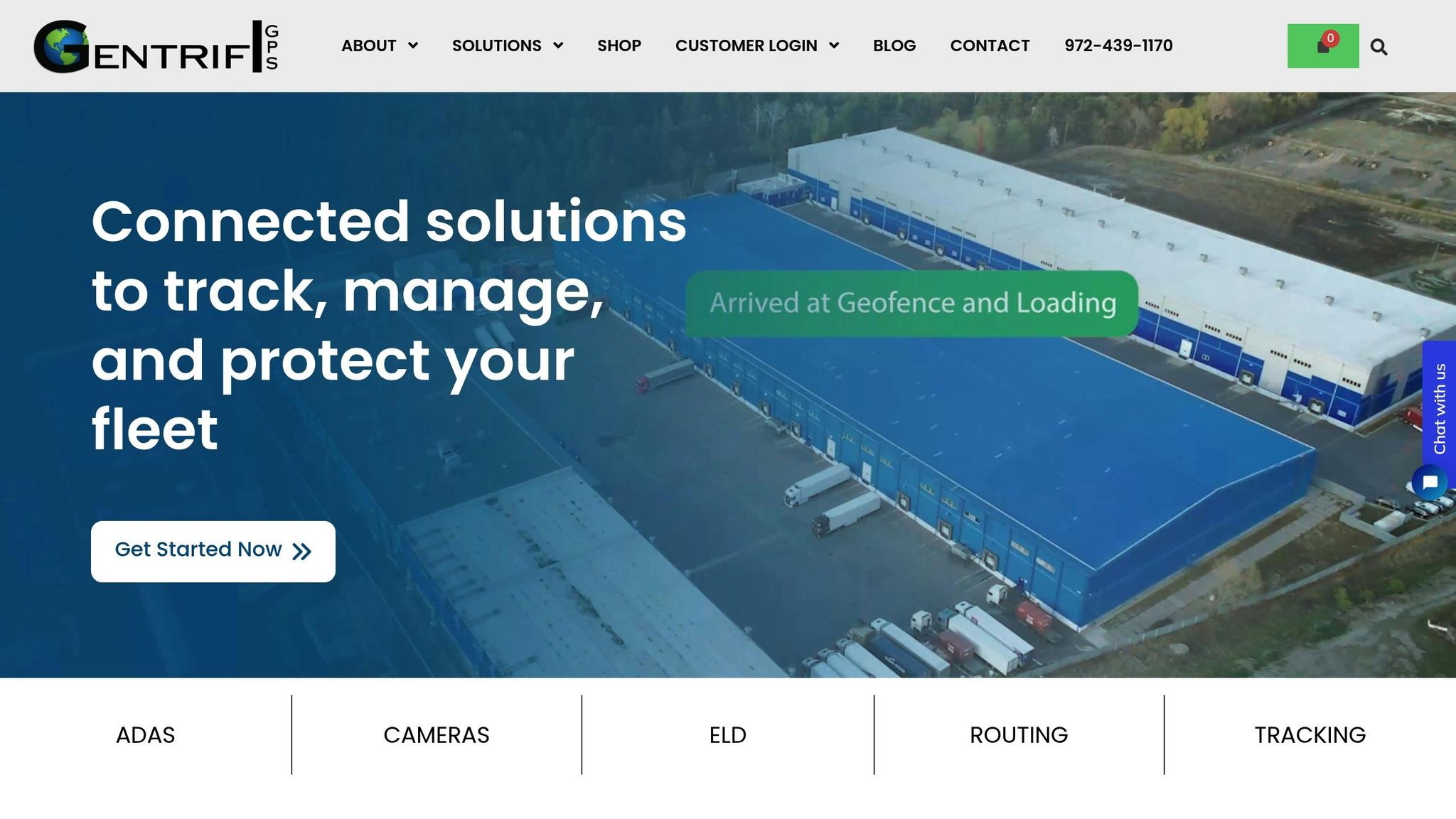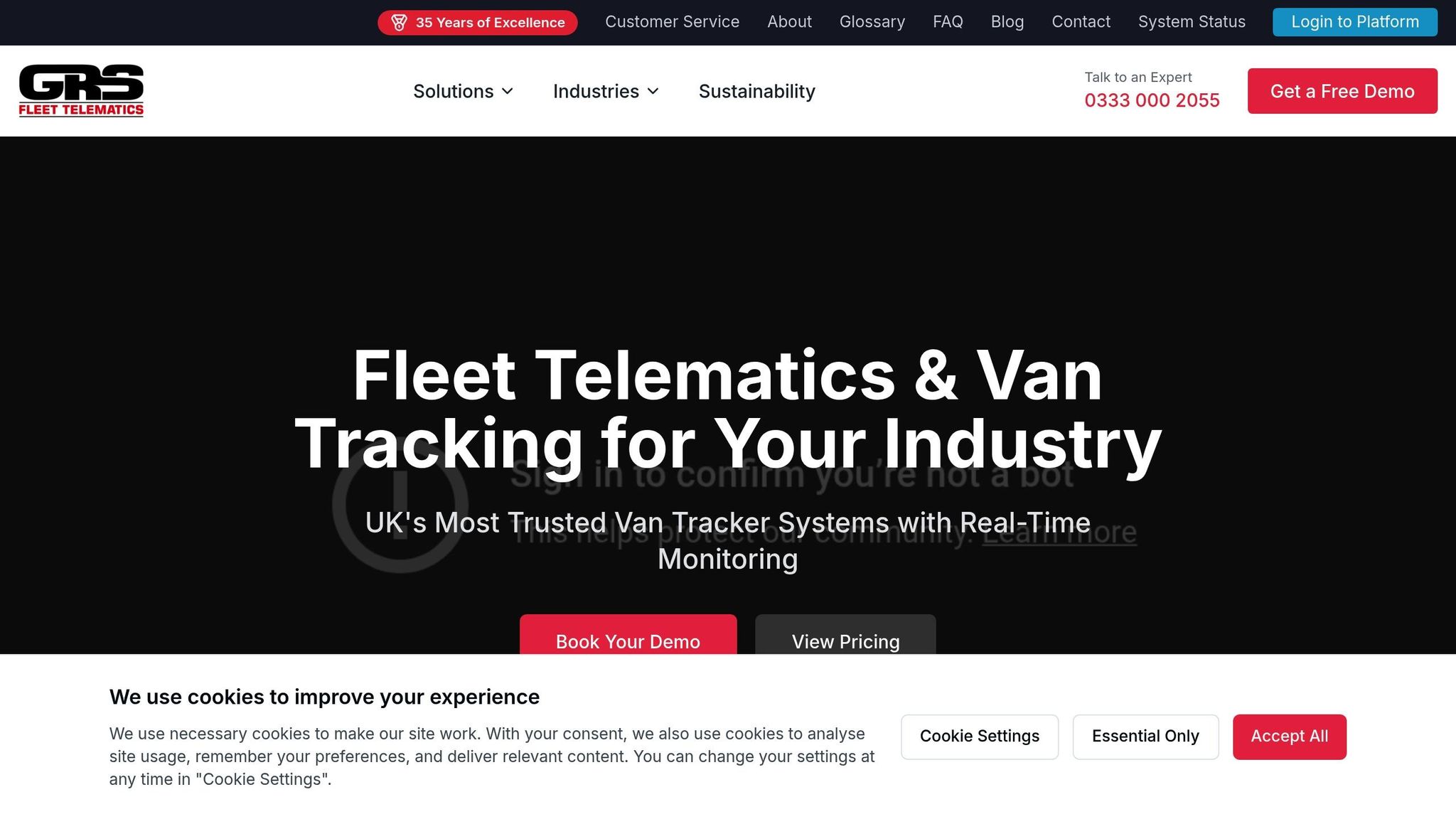How Event-Based Video Recording Works in Fleets
Event-based video recording enhances fleet safety and efficiency by capturing crucial incidents, reducing costs, and improving driver accountability.

Event-based video recording is changing how fleets handle safety and efficiency. Instead of recording everything, these systems only save footage during specific incidents like harsh braking or sudden acceleration. This approach saves storage, reduces bandwidth, and focuses on key moments that matter for fleet managers.
Here’s what you need to know:
- How it works: Cameras and sensors detect events and start recording a few seconds before and after the incident.
- Benefits: Improves driver safety, reduces false claims, lowers costs, and simplifies compliance with regulations.
- Integration: When combined with telematics, it provides a full picture of incidents, including location and speed data.
- Key tools: AI-powered cameras, G-force sensors, and cloud-based platforms for easy access and analysis.
- Cost savings: Reduces collision-related expenses by up to 86% and cuts operational costs by 6%.
This technology is a practical way for UK fleet managers to improve safety, cut costs, and handle incidents more effectively.
Core Components of Event-Based Video Recording Systems
Hardware Components
The backbone of any event-based video recording system is its hardware, which works in unison to capture, process, and transmit essential footage. At the heart of these systems are AI-enabled dash cameras, which come in various configurations. The most common are single forward-facing cameras, but dual-camera setups are increasingly popular due to their ability to monitor driver behaviour. For fleets that demand full visibility, multi-camera systems provide a 360-degree view of the vehicle’s surroundings.
Modern configurations often include forward-, rear-, and cabin-facing cameras. Dual-camera systems are particularly appealing for their straightforward installation, while separate driver-facing cameras allow for more flexible placement to optimise performance.
Telematics devices are another critical component, integrating GPS trackers and accelerometers to monitor vehicle movement. These devices pair with connectivity modules, such as 4G LTE cellular or Wi‑Fi, enabling real-time data transmission. Storage options range from SD cards, which offer quick access to footage, to SSD hard drives that support extended recording capacity, with some systems accommodating up to 512 GB of storage across dual SD card slots.
"What we look to solve with the cameras is protecting our greatest asset which is our employees. One of the things that keeps I think every person in my role up at night is understanding who is behind the wheel." - Chris Foster, Fleet Safety Manager, LKQ Corporation
Fleet managers need to balance functionality, ease of installation, and telematics integration when selecting hardware. Placement, such as windshield mounting, must comply with legal requirements while ensuring compatibility with advanced driver assistance systems (ADAS) and driver monitoring systems (DMS) algorithms.
The hardware lays the groundwork for software tools that turn raw data into meaningful insights.
Software Integration
Once the hardware collects data, the software refines it into actionable insights. Cloud platforms process video footage and telematics data, generating concise incident reports. These platforms use AI-driven analytics to automatically identify high-risk behaviours, streamlining the workload for fleet managers.
Analytics dashboards offer intuitive interfaces where managers can review incidents, assess driver performance, and spot trends. Customisable alerts based on specific parameters ensure that managers receive only the most relevant information, avoiding unnecessary data overload while focusing on critical safety concerns.
Software integration also supports targeted coaching programmes by using real footage and performance metrics. Fleet managers can address specific behaviours through personalised training sessions tailored to individual drivers. This method has shown measurable success, with businesses adopting advanced fleet management systems reporting up to a 15% reduction in operational costs.
Sensors and Event Triggers
Beyond cameras and connectivity, intelligent sensors play a key role in capturing critical moments. These sensors rely on precise triggers to initiate recordings. For instance, G-force sensors detect unusual vehicle movements, such as collisions, sudden braking, or rapid acceleration, automatically starting the recording process. Adjustable settings for sensitivity and speed thresholds allow fleet managers to fine-tune the system for different driving environments.
Motion detection adds another layer of security by monitoring parked vehicles for potential threats like vandalism or theft. This feature captures incidents even when the vehicle is stationary, offering protection beyond active driving. The system differentiates between routine activity and potential risks, ensuring that only relevant footage is saved.
Advanced sensors go further, identifying complex behaviours such as tailgating, running red lights, and distracted driving. These capabilities address the alarming statistic that 87% of traffic accidents are preventable, according to the Federal Motor Carrier Safety Administration (FMCSA). In 2020 alone, distracted driving contributed to over 3,100 fatalities, as reported by the National Highway Traffic Safety Administration (NHTSA). These sensors aim to reduce such incidents by capturing risky behaviours before they escalate.
The sensor network provides comprehensive monitoring, capturing both road-facing and cabin-facing events. This dual perspective gives fleet managers a complete view of external hazards and internal driver actions. Dashcams have been shown to reduce accidents by up to 86%, promoting safer driving habits and fostering a culture of accountability.
Powerful Fleet Dash Cam with Critical Event Reporting | Gentrifi's Cloud Camera

How Event-Based Video Recording Works in Fleets
Event-based video recording turns driving incidents into actionable insights, helping fleets improve safety and efficiency. It’s a structured process that starts with detecting events and ends with thorough analysis, offering a complete picture of what happened on the road.
Starting the Recording Process
These systems kick into gear the moment they detect specific driving behaviours. AI-powered cameras continuously monitor for triggers like harsh braking, sudden acceleration, sharp turns, near collisions, or accidents.
When such an event occurs, the system captures video footage before, during, and after the incident, ensuring all angles are covered. Simultaneously, drivers receive instant alerts from AI dashcams and vehicle trackers, keeping them informed in real time. If multiple events happen at once, the system prioritises the most critical one for immediate attention. This seamless process ensures that no crucial detail is missed, and all footage is ready for further analysis.
Data Integration and Upload
Once an event is recorded, the system integrates the video with telematics data, providing a full view of the incident. This combination of visuals and data - such as location, speed, and time - offers fleet managers a comprehensive incident report.
The system automatically uploads the footage to the cloud as soon as an incident occurs, ensuring fleet managers receive critical evidence without delay. This quick turnaround is especially important in urgent scenarios like accidents or insurance claims. By automatically flagging high-risk behaviours, the technology ensures that even incidents that might go unnoticed are documented and addressed.
Reviewing and Analysing Events
After the data is uploaded, fleet managers can review incidents either in real time or at a later stage, offering flexibility for immediate action or long-term planning. Modern platforms provide user-friendly interfaces where managers can watch footage, evaluate driver performance, and identify patterns. This targeted approach allows managers to give specific feedback and tailor training to individual drivers, rather than relying on generic methods.
Real-time alerts and detailed post-trip analysis also help managers coach drivers effectively, reducing accident risks through evidence-based feedback. Additionally, having clear video evidence protects companies from false liability claims and speeds up insurance processes. By studying incident trends and driver habits, fleet managers can make smarter decisions about vehicle routes, resource allocation, and overall operations, ensuring the fleet runs more smoothly and safely.
Benefits and Applications of Event-Based Video Recording
Event-based video recording is reshaping fleet management by enhancing safety, reducing costs, and improving operational efficiency. For UK fleet managers, who often grapple with rising insurance premiums and strict regulatory demands, this technology offers practical solutions to everyday challenges. Let’s break down its key benefits and real-world applications.
Main Benefits
The advantages of event-based recording go beyond just improving safety. It delivers measurable cost savings, legal support, and compliance benefits that make it an indispensable tool for fleet operators.
Driver Safety and Behaviour Improvement is one of the standout benefits. Fleets equipped with video monitoring systems have reported a significant reduction in risky driving habits. In fact, 73% of users observed safer driving behaviours among their drivers. With driver error responsible for roughly 90% of accidents, this technology directly addresses a major concern for fleet operators.
"Fleet and video telematics has a huge role to play in any risk reduction strategy." – Steve Thomas, Managing Director at Inseego UK Ltd
Cost Savings are another major draw. A 2013 study on commercial vehicles found that installing dash cameras led to an 86% decrease in collision-related expenses over three years. Companies using fleet telematics and video safety solutions saw an average return on investment of 815% and cut operational costs by 6%. Considering that a single commercial vehicle accident can cost businesses around £70,000, these savings are anything but trivial.
Fraud Prevention and Legal Protection are critical in today’s insurance landscape. Event-based systems provide clear, objective evidence that can protect against false claims. This is especially valuable since 75% of car-truck collisions are not caused by the truck driver. Such evidence is a game-changer in insurance disputes and legal cases.
Regulatory Compliance and Risk Management are simplified with these systems. Their ability to document incidents ensures adherence to increasingly stringent government safety regulations.
Use Cases in Fleet Management
Event-based video recording isn’t just about capturing incidents - it’s about using that data to make smarter decisions across various aspects of fleet management.
Accident Investigation and Insurance Claims: These systems have proven invaluable in resolving disputes. For example, a logistics company in the UK used event-based recordings to prove fault in an accident, speeding up police investigations and claim resolutions.
Driver Coaching and Performance Improvement: The recorded events allow for targeted training sessions. Fleets that implemented coaching based on these recordings saw a 30% drop in accidents and a 20% reduction in annual insurance costs.
Fuel Efficiency Optimisation: By monitoring behaviours like idling and harsh acceleration, an urban delivery fleet improved fuel efficiency by 15%. This also led to lower maintenance costs due to smoother driving habits.
Customer Service Enhancement: Delivery companies have used video telematics to resolve disputes and boost accountability. One last-mile delivery firm reported a 25% increase in customer satisfaction and fewer cases of lost or damaged goods after implementing this technology.
Fleet Risk Assessment and Route Planning: The insights provided by these systems help managers optimise routes and allocate resources more effectively. Analysing driver performance patterns allows for smarter decision-making and better deployment of vehicles.
Event-Based vs Continuous Recording Comparison
To understand why event-based recording is gaining traction, it’s helpful to compare it with continuous recording:
| Factor | Event-Based Recording | Continuous Recording |
|---|---|---|
| Data Storage | Minimal – records only key incidents | Extensive – captures all driving time |
| Cost Efficiency | Lower costs due to reduced storage and transmission needs | Higher costs for data storage and management |
| Privacy Concerns | Less intrusive – monitors specific events only | More intrusive – constant surveillance |
| Battery Impact | Lower power usage – activates during events | High power consumption – always recording |
| Data Analysis | Focused on critical events | Overwhelming volume requiring extensive filtering |
| Real-Time Alerts | Immediate notifications for risky behaviours | Delayed issue identification within large data sets |
| Bandwidth Usage | Efficient – uploads only relevant clips | High bandwidth demands for continuous streaming |
| Incident Investigation | Quick access to specific events | Time-intensive searches through hours of footage |
| Driver Coaching | Precise feedback based on actual events | Generalised feedback due to difficulty isolating behaviours |
| Compliance | Balances monitoring with privacy laws | May face challenges with privacy regulations |
This side-by-side comparison highlights why event-based recording is becoming the go-to choice for UK fleet operators. It strikes the right balance between safety, efficiency, and respect for privacy, making it a practical and effective solution in modern fleet management.
Integration with GRS Fleet Telematics Solutions

GRS Fleet Telematics is at the forefront of modern fleet management, combining video recording capabilities with van tracking technology. This integration transforms traditional vehicle monitoring into a dynamic system that gives UK businesses greater insight into their fleet operations.
GRS Fleet Telematics Features
At the heart of GRS Fleet Telematics is its dual-tracker technology, which supports event-based video recording systems. This dual-tracker setup ensures uninterrupted access to video data, even during incidents.
The system boasts an impressive 91% recovery rate for stolen vehicles. Paired with event-based video recording, it creates a powerful security framework. While the video system captures theft attempts in real time, the dual-tracker continues to monitor the vehicle, even if the primary device is tampered with.
Real-time safety monitoring is another key feature. The system records events triggered by factors such as speeding, geofencing breaches, and eco-driving behaviours. This allows fleet managers to not only analyse the data but also view the surrounding circumstances through immediate video evidence.
The 24/7 recovery support extends beyond theft, assisting with incident management. When an event triggers the system, support teams gain instant access to tracking data and video footage, enabling quick and effective responses.
At just £7.99 per month per vehicle - including SIM and data costs - GRS Fleet Telematics ensures that video telematics is accessible to businesses of all sizes, providing a cost-effective solution to UK fleet challenges.
Meeting UK Fleet Needs
UK businesses face distinct challenges that make event-based video recording particularly valuable. These systems play a crucial role in addressing driver behaviour concerns, improving safety, and ensuring compliance with regulations.
GRS Fleet Telematics is designed with UK-specific regulations in mind. Its event-based system strikes a balance between effective monitoring and respecting privacy, ensuring compliance with data protection laws while providing reliable evidence for insurance claims and accident investigations.
The system also supports the rising demand for AI-powered analysis, which strengthens safety protocols. For instance, it can detect risky behaviours like mobile phone use or driver fatigue and send immediate alerts to both drivers and fleet managers.
Weather and environmental integration further enhances its utility in the UK. By linking video footage to weather data and road conditions, the system offers valuable context for understanding incidents in the UK's unpredictable climate.
To cater to different needs, GRS Fleet Telematics offers three hardware options: Essential (£35), Enhanced (£79), and Ultimate (£99). This scalability ensures businesses can choose a solution that aligns with their specific requirements.
Value for GRS Customers
The combination of event-based video recording and GRS Fleet Telematics delivers tangible benefits across multiple areas. The growing confidence in video telematics solutions is reflected in the market's projected compound annual growth rate of 18.8% through 2029.
Improved security and operational transparency are significant advantages. Event-triggered recordings provide fleet managers with visual evidence and precise location data, eliminating guesswork about incidents or driver behaviour. This footage can also be used for driver training and performance reviews, while offering proof of deliveries or incident details to resolve disputes quickly.
"Video telematics takes the benefits of traditional telematics a step further by adding visual context. Instead of just analysing data points and vehicle metrics, fleet managers can now access actual footage showing exactly what happened and why." – Nationwide Fleet Installations
The immobilisation feature, available with the Ultimate package, adds another layer of security. This capability can record theft attempts while simultaneously preventing vehicle movement, increasing the likelihood of recovery and prosecution.
Cost efficiency is another standout benefit. By integrating video recording and tracking, the system eliminates the need for multiple providers. Free installation is even available when paired with fleet branding through GRS Fleet Graphics, adding further value.
Additionally, the pay-per-recovery model, which avoids upfront recovery fees, reflects GRS Fleet Telematics' confidence in its services, aligning its success with customer outcomes.
For UK businesses aiming to modernise their fleet operations, the integration of event-based video recording with GRS Fleet Telematics provides a comprehensive solution. It addresses safety, security, compliance, and operational efficiency - all in an affordable package designed to meet the needs of modern fleets.
Conclusion
Event-based video recording is transforming fleet management in the UK, offering businesses a practical way to tackle operational challenges. By recording footage only during specific driving events - like harsh braking, sudden acceleration, or sharp turns - this technology saves time by eliminating the need to sift through hours of continuous video while still capturing the critical moments that matter.
When combined with telematics systems, this approach becomes even more powerful, enabling fleet operators to manage data more efficiently and gain deeper insights into both vehicle performance and driver behaviour. These capabilities open the door to meaningful improvements in safety and operational efficiency.
Key Takeaways
Event-based recording goes beyond simply documenting incidents - it uses AI-driven insights to explain why these events happen. This added context proves invaluable for insurance claims, providing clear evidence to resolve disputes more effectively.
Additionally, the system supports a balanced approach to fleet management. While it identifies areas for improvement, it also highlights and rewards good driving practices, creating a positive feedback loop that encourages excellence and accountability.
"This is moving towards understanding why an accident happened, not just incidents in isolation. For instance, if the telematic element suggests driver distraction, the video footage may paint a different picture, or it may confirm a bad driving practice."
– James Ashford, National Manager of UK Connected Services, Brigade Electronics UK Ltd
The impact of integrated telematics cameras is clear. Models like the RH600 have been shown to lower accident rates by up to 39%, reduce speeding incidents by 35%, and improve fuel efficiency by as much as 10%.
It’s important for fleet managers to communicate that these cameras are tools for insight, not surveillance, and to provide proper training to ensure smooth adoption and use.
Next Steps with GRS Solutions
For UK businesses ready to embrace this technology, GRS Fleet Telematics offers a tailored solution. Their system combines event-based video with dual-tracker technology and boasts a 91% vehicle recovery rate, ensuring continuous monitoring and reliable evidence for incident management.
With the ongoing transition to 4G and 5G services in the UK, now is the perfect time for fleet operators to upgrade from older digital recording devices to live, connected systems. GRS Fleet Telematics provides three scalable hardware options to suit different needs and budgets: Essential (£35), Enhanced (£79), and Ultimate (£99).
At just £7.99 per vehicle per month - including SIM and data costs - this technology is accessible to businesses of all sizes. GRS also operates on a pay-per-recovery model, reflecting their confidence in the system’s effectiveness and aligning their success with customer satisfaction.
To get started, fleet managers should define their key objectives, whether it’s improving safety, reducing costs, ensuring compliance, or boosting efficiency. With seamless integration into existing processes, GRS Fleet Telematics equips businesses to make smarter decisions and achieve better performance across their operations in the UK.
FAQs
How does event-based video recording improve driver safety and help prevent false claims in fleet management?
Event-based video recording plays a key role in improving driver safety by capturing crucial moments during incidents. These recordings provide clear, unbiased evidence that helps clarify what occurred. For drivers, this means protection from wrongful blame, as the footage can confirm when they’re not at fault. At the same time, it promotes safer driving habits by holding individuals accountable for their actions.
Another major advantage is its ability to combat false claims. Real-time footage can discourage fraudulent activities and make insurance claims far more straightforward. This results in faster, fairer outcomes and helps fleet operators avoid unnecessary financial losses.
What equipment and software are needed to set up an event-based video recording system for a fleet?
To set up an event-based video recording system for your fleet, you'll need a mix of specialised hardware and software working together seamlessly.
On the hardware side, you'll need digital video recorders (DVRs), a variety of cameras (like forward-facing, rear-facing, and side cameras to cover all angles), and wireless connectivity modules for remote access. These components ensure that video footage is captured and stored efficiently.
On the software side, you'll need fleet video management tools. These tools let you access live and recorded footage remotely, identify and analyse driving events, and integrate smoothly with telematics systems. This integration allows for real-time driver behaviour monitoring and provides actionable insights to enhance safety and efficiency across your fleet.
When these hardware and software elements come together, you get a system that automatically records key events, offering improved security, accountability, and operational control.
How does event-based video recording work with telematics to improve fleet efficiency?
Event-based video recording captures footage automatically during critical moments like harsh braking, sudden acceleration, or collisions. These incidents are detected in real-time and paired with telematics data, offering a detailed view of both the event and its underlying causes.
When combined with telematics systems, this technology allows fleet managers to better understand incidents, refine driver training, and boost safety measures. The result? Reduced risks, smoother operations, faster decision-making, and improved adherence to safety regulations.
